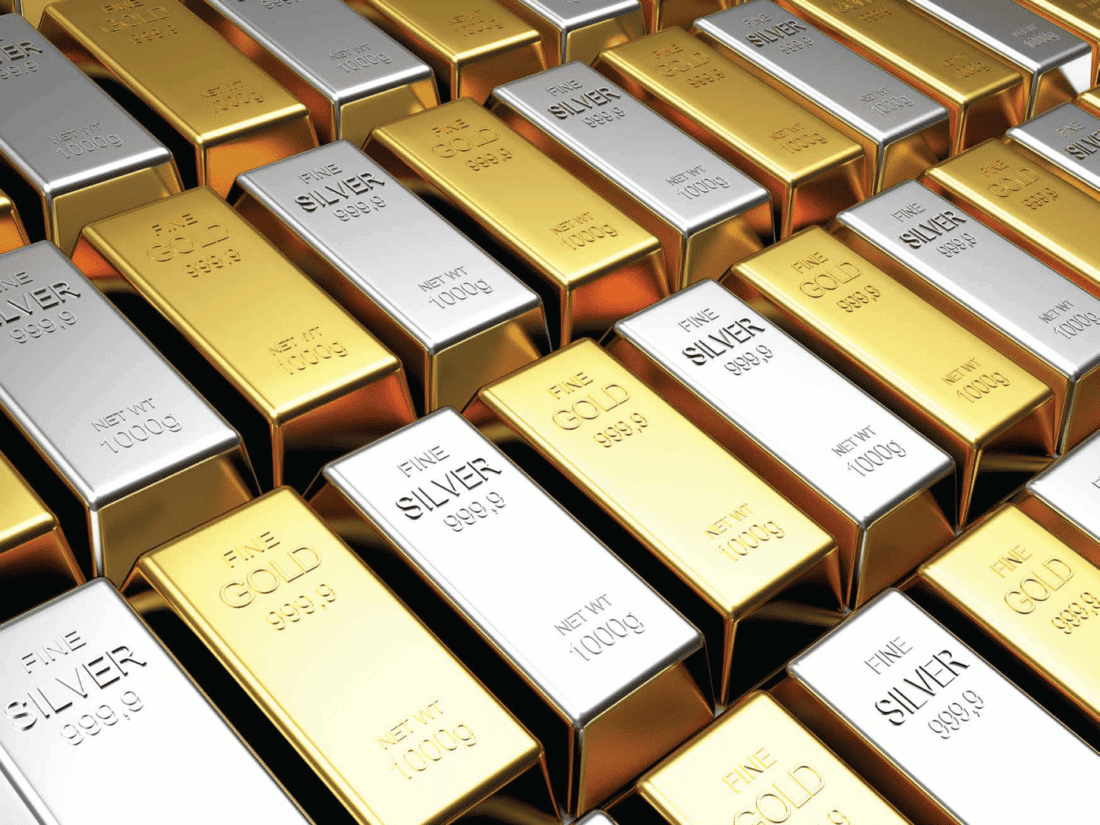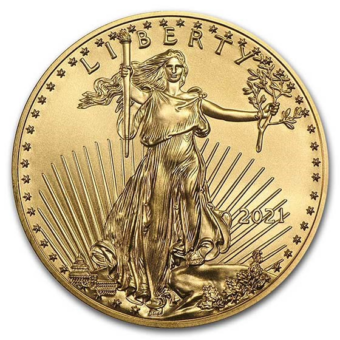The Gold Trail: A Daily Journey Through the Week's Market
Monday - 7.24.23:
Gold prices are showing a cautious increase ahead of the upcoming Federal Reserve meeting, where a rate decision and press conference are scheduled for Wednesday. The precious metal is currently priced at $1969.50, up $5. Meanwhile, Ned Davis Research has turned bullish on gold and bearish on the US dollar, citing the dollar's decline and gold's gain in recent times.
Tuesday - 7.25.23:
Gold is trading higher ahead of the Fed rate decision and press conference, up $7 at $1964. Silver also rises, up 32¢ at $24.75. Crescat Capital predicts a surge in gold demand due to the mounting US government debt problem, weakening the dollar and prompting investors to turn to gold as a hedge against inflation and for better returns in the current economic environment.
Wednesday - 7.26.23:
Gold and silver prices are mixed ahead of the Fed rate decision. Investors await Powell's remarks for clues on future monetary policy.
Thursday - 7.27..23: Gold and silver prices rose after the Fed's rate hike, with gold up $5 and silver up 13¢. JP Morgan expects the Fed to turn dovish in Q2 2023, which will drive gold to unprecedented levels. Greg Shearer of JP Morgan recommends investing in gold and silver as a late-cycle diversifier.
Friday - 7.28.23: Gold prices rose to $1959 after Japan hinted at moving away from its dovish monetary policy, boosting the Japanese yen. The potential return of inflation to Japan might necessitate an interest rate hike, which could further support the yen.
The Overview: Global Economic Developments Trigger Volatility in Gold Market
Gold prices have witnessed a rollercoaster of changes recently due to various economic factors. U.S. PCE inflation's cooling and a growing income-consumption gap initially pushed gold above $1,950. However, robust U.S. labor market data and stronger-than-expected U.S. Q2 GDP growth applied downward pressure on gold prices. Similarly, an unexpected rise in durable goods orders triggered a sell-off in gold, further lowering prices. Meanwhile, despite a slight uptick in U.S. pending home sales, gold prices remained largely unmoved.
Forecasts from JPMorgan Chase predict a surge in gold and silver as the Federal Reserve's tightening cycle nears its end, causing hedge funds to increase activity in anticipation. Simultaneously, China's gold consumption soared 16% in H1 2023 due to strong demand for jewelry and safe-haven assets, contributing to a positive outlook for China's gold market.
Gold Prices Climb Amid Cooling U.S. Inflation and Looming Income-Consumption Gap
Gold prices have surged past the $1,950 mark in response to the U.S. PCE inflation rate cooling off to a 0.2% increase in June, meeting economists' expectations. Despite inflation remaining high at double the Federal Reserve's 2% target, its continued decrease may allow the Federal Reserve to maintain interest rates in September. These developments, along with a potential pause in the central bank's tightening, are underpinning gold prices. The report also indicates that consumer income growth is lagging behind consumption growth, with spending increasing by 0.5% last month, further fueling gold's price rise.
U.S. Labor Market Stays Strong as Jobless Claims Decline, Sending Gold Prices Down
The U.S. labor market demonstrated ongoing resilience as the number of first-time unemployment benefit applicants continued to decrease. The U.S. Labor Department revealed that the weekly jobless claims dropped by 7,000 to 221,000 for the week ending July 22, surpassing the economists' forecast of a rise to 234,000. Additionally, the four-week moving average for new claims, considered a more reliable labor market measure, fell to 233,750. Continuing jobless claims also fell to 1.690 million. These robust employment statistics negatively impacted gold prices, which dropped from $1977.09 to $1964.04 after the report release and continued to decline.
Gold Prices Stagnate as U.S. Q2 GDP Outperforms Expectations
Stronger-than-expected U.S. economic growth and declining inflation pressures are challenging gold prices. The U.S. Bureau of Economic Analysis reported that the second-quarter Gross Domestic Product (GDP) showed the economy expanded by 2.4%, exceeding the expected 1.8% increase. This robust growth follows a 2.0% growth in the first quarter of 2023. Key contributors to this GDP growth include consumer spending, nonresidential fixed investment, and various government spending. However, the gold market is facing renewed selling pressure due to this positive economic data, with August gold futures trading around $1,968.40 an ounce. Additionally, a significant reduction in inflation pressures, with the GDP Price index rising only 2.2% instead of the expected 3.0%, poses a challenge for gold.
Durable Goods Beat Expectations with 4.7% Rise, Triggering Gold Sell-off
Gold prices plummeted following new data revealing U.S. factory orders for long-lasting goods increased by 4.7% in June, significantly surpassing the expected increase of 1.3%. This marks the fourth consecutive month of positive gains for durable goods. The U.S. Census Bureau attributed the monthly surge in durable goods orders, which amounted to $13.6 billion, primarily to a 12.1% increase in transportation equipment. Excluding the volatile transportation sector, core durable goods rose by 0.6% against a nominal expected rise of 0.1%. Following the data release, gold experienced a sharp decline, with August Comex gold futures dropping to session lows at $1958.30 after trading above $1982 earlier in the day.
Gold Prices Unmoved by U.S. Pending Home Sales Uptick
Gold prices, trading near session lows, largely disregarded the surprising improvement in the U.S. housing market. The U.S. pending home sales index rose by 0.3% in June, contrasting the 2.5% drop in May and exceeding the consensus forecast of a 0.5% decline, according to the National Association of Realtors (NAR). This is the first increase in mortgage signings since February. NAR Chief Economist Lawrence Yun suggests this data could signal a halt in the housing recession, despite the lack of a full recovery yet. However, gold remained unaffected by these housing market developments, trading at $1,944.40 an ounce, down 1.30% on the day, while responding more to currency volatility following the European Central Bank's monetary policy decision.
JPMorgan Chase Predicts Gold and Silver Surge as Fed Tightening Cycle Nears End
In a recent research note, JPMorgan Chase's executive director of global commodities research, Greg Shearer, predicted that the impending end to the Federal Reserve's tightening cycle and potential upcoming recession will support gold and silver prices. He anticipates the Federal Reserve will start reducing interest rates by Q2 2024, with gold prices expected to average around $2,012 per ounce in H2 2023 and $2,175 by Q4 2024. The upcoming Federal Reserve's monetary policy decision presents significant uncertainty, with the market evenly split on whether interest rates will be maintained between 5.25% and 5.50% for the rest of the year.
Hedge Funds Load Up On Gold and SIlver In Anticipation of FOMC Decision
Following the speculation that the Federal Reserve's final rate hike will occur this July, hedge funds have increased their activity in the gold market. The CFTC reported that for the week ending July 18, money managers have amplified their speculative gross long positions in Comex gold futures, reaching its highest level since March 2022. Despite this bullish activity, gold has struggled to maintain its gains due to consistent core inflation and a robust labor market.
Silver has been outperforming gold, with its net length increasing to its highest level since mid-April, and bullish sentiment rising at its fastest pace in over five years. Despite some fluctuation, most analysts predict a bullish outlook on silver in the long run due to the green energy transition and increasing demand for solar power driving industrial demand for this precious metal.
China's Gold Consumption Soars 16% in H1 2023
According to the China Gold Association (CGA), China's gold consumption surged 16.37% year-over-year to 554.88 tonnes in the first half of 2023. This was driven by strong demand for gold jewelry and coins and bars. Gold jewelry consumption rose 14.82% to 368.26 tonnes, while demand for gold coins and bars increased by 30.12% to 146.31 tonnes. China's gold output also grew by 2.24% year-over-year to 178.6 tonnes in H1 2023. This was due to higher production from both small-scale and large-scale mines.
The CGA said that the increase in gold consumption in China was driven by a number of factors, including the normalization of the economy, the revival of the economy, and the increasing popularity of gold as a safe haven asset. The CGA also noted that larger gold companies are actively pursuing mergers and acquisitions, which will further concentrate high-quality gold resources in the country. Overall, the outlook for China's gold market is positive. The CGA expects gold consumption to continue to grow in the second half of 2023, driven by strong demand from both jewelry and investment sectors.
Next Week’s Key Events
Monday, July 31, 2023
- 9:45 AM: USD Chicago PMI (Jul)
Impact on Precious Metals Markets: The Chicago PMI (Purchasing Managers' Index) is an indicator of the economic health of the manufacturing sector in the Chicago region. A higher than expected reading can be bullish for the USD, potentially creating downward pressure on precious metals as they become more expensive for holders of other currencies.
Tuesday, August 1, 2023
- 10:00 AM: USD ISM Manufacturing PMI (Jul)
- 10:00 AM: USD JOLTs Job Openings (Jun)
Impact on Precious Metals Markets: The ISM Manufacturing PMI provides insights on the nationwide health of the manufacturing sector. A higher reading can strengthen the USD, potentially negatively impacting precious metals prices. The JOLTs Job Openings report measures job vacancies, reflecting the overall labor demand and worker confidence. A higher than anticipated number can also strengthen the USD, creating potential downward pressure on precious metals.
Wednesday, August 2, 2023
- 8:15 AM: USD ADP Nonfarm Employment Change (Jul)
Impact on Precious Metals Markets: The ADP Nonfarm Employment Change report indicates the monthly change in nonfarm, nongovernmental employment. Positive employment change can suggest economic growth, strengthening the USD, and potentially putting downward pressure on precious metal prices.
Thursday, August 3, 2023
- 8:30 AM: USD Nonfarm Productivity (QoQ) (Q2)
- 10:00 AM: USD Factory Orders (MoM) (Jun)
- 10:00 AM: USD ISM Non-Manufacturing PMI (Jul)
Impact on Precious Metals Markets: The Nonfarm Productivity data measures labor efficiency in goods and services production, excluding the farming industry. A high reading can strengthen the USD, potentially negatively impacting precious metals prices. Factory Orders can indicate the health of the manufacturing sector. A higher reading can strengthen the USD, potentially negatively impacting precious metal prices. Lastly, the ISM Non-Manufacturing PMI measures the health of the non-manufacturing sector. A higher than expected reading can also strengthen the USD, creating potential downward pressure on precious metals.
Friday, August 4, 2023
- 8:30 AM: USD Private Nonfarm Payrolls (Jobs Report) and Unemployment Rate (Jul)
Impact on Precious Metals Markets: The Private Nonfarm Payrolls and Unemployment Rate reports reflect the state of the labor market. Strong data could suggest economic health, potentially strengthening the USD and putting downward pressure on precious metal prices.





















